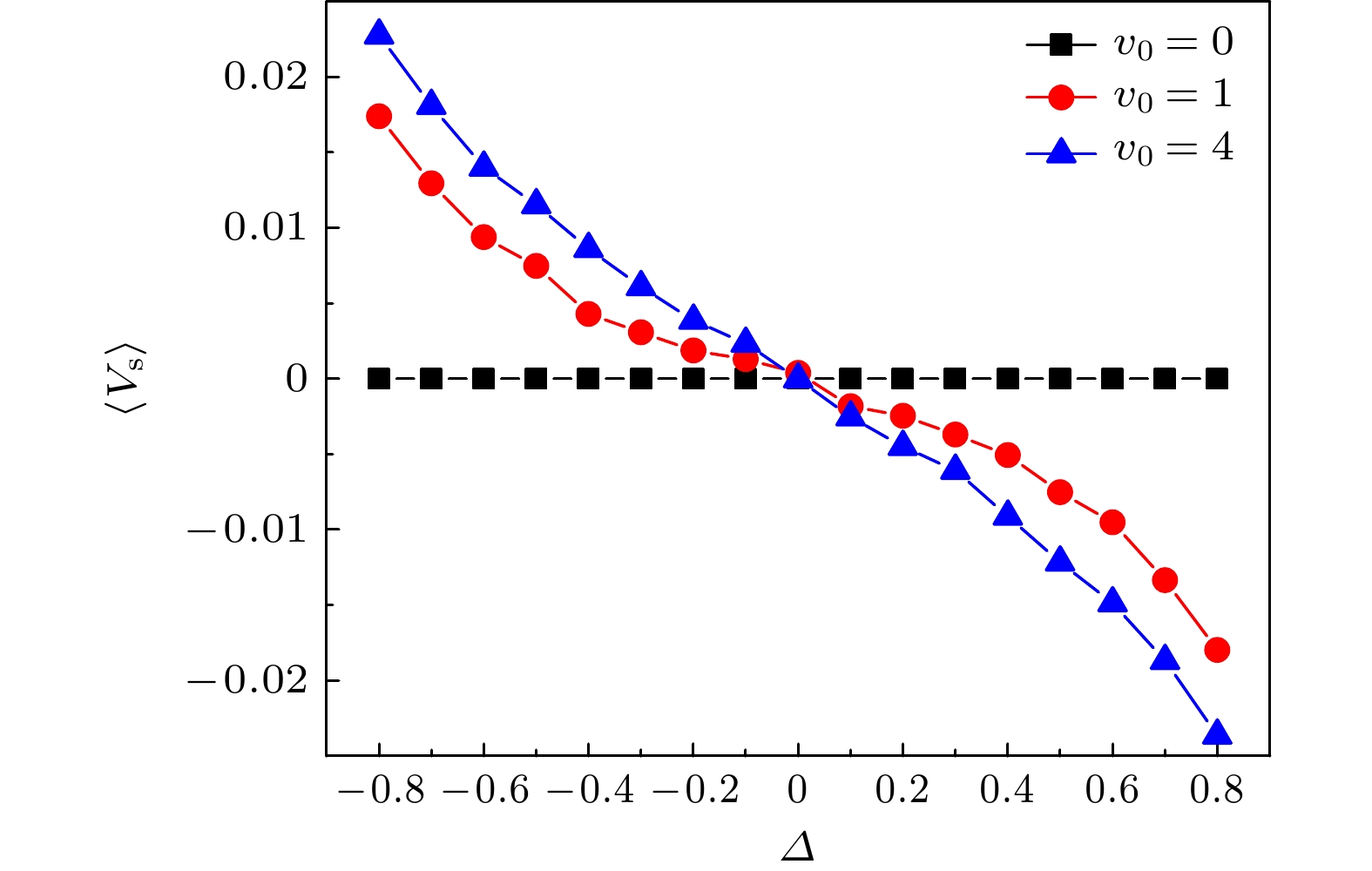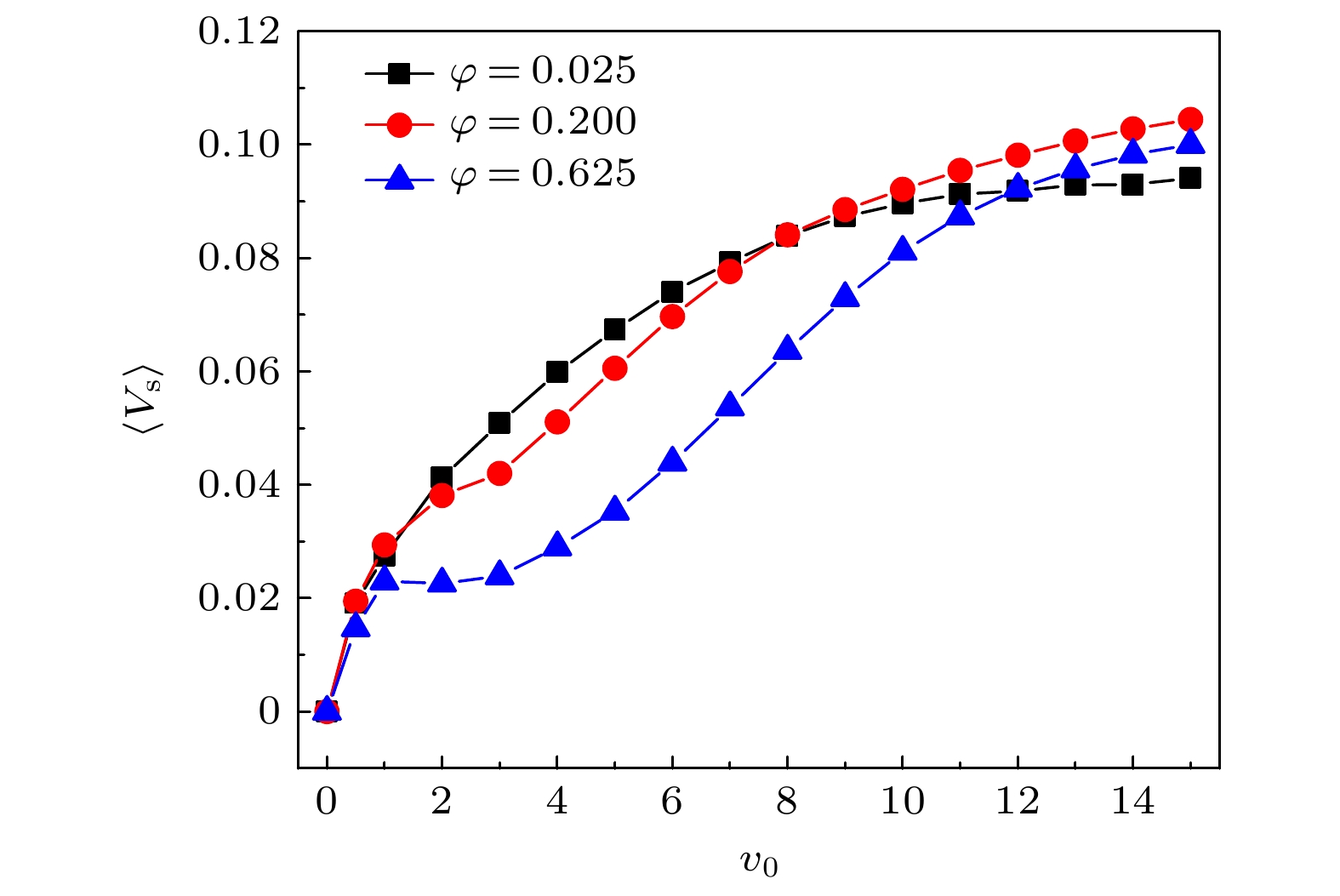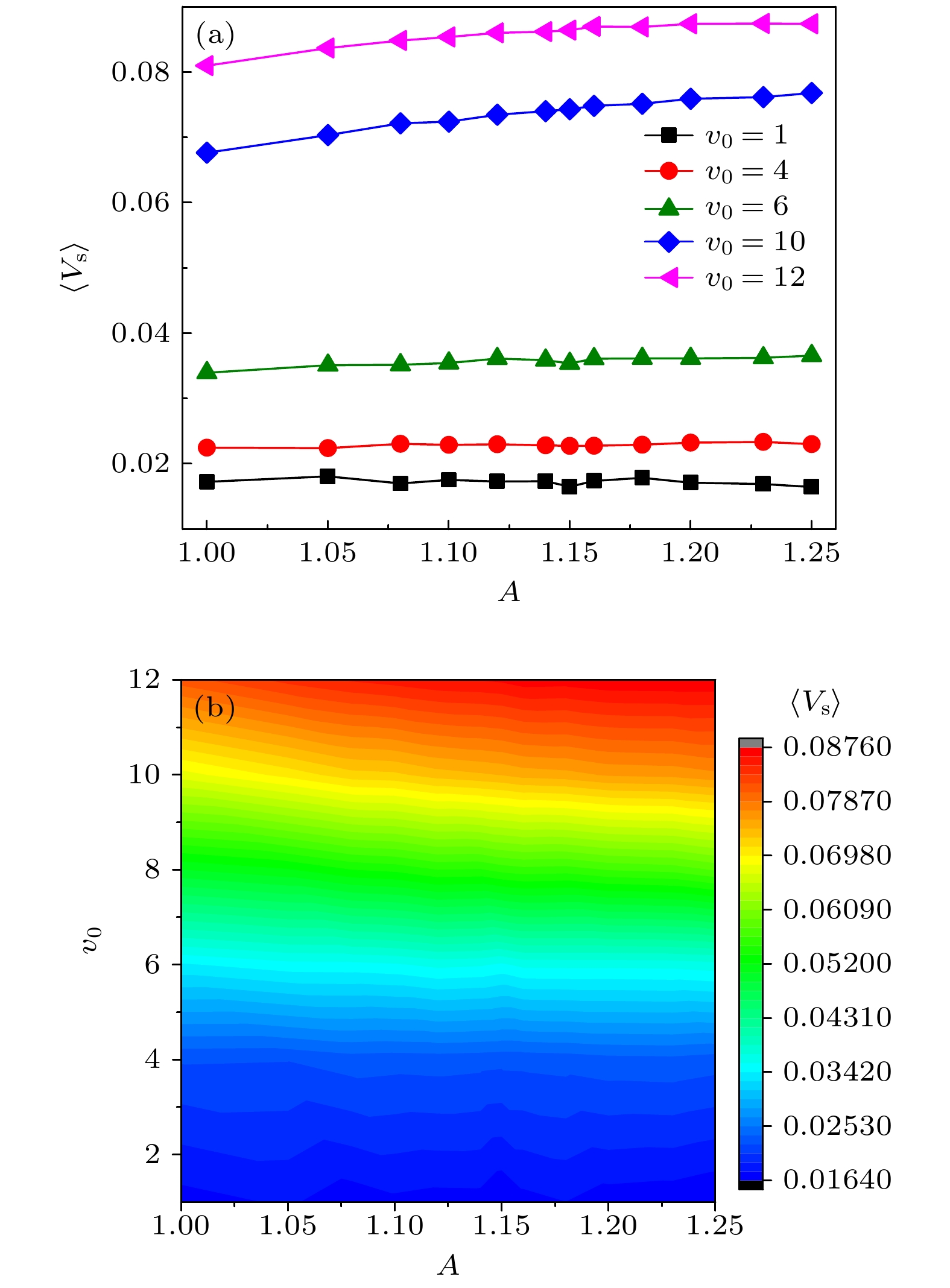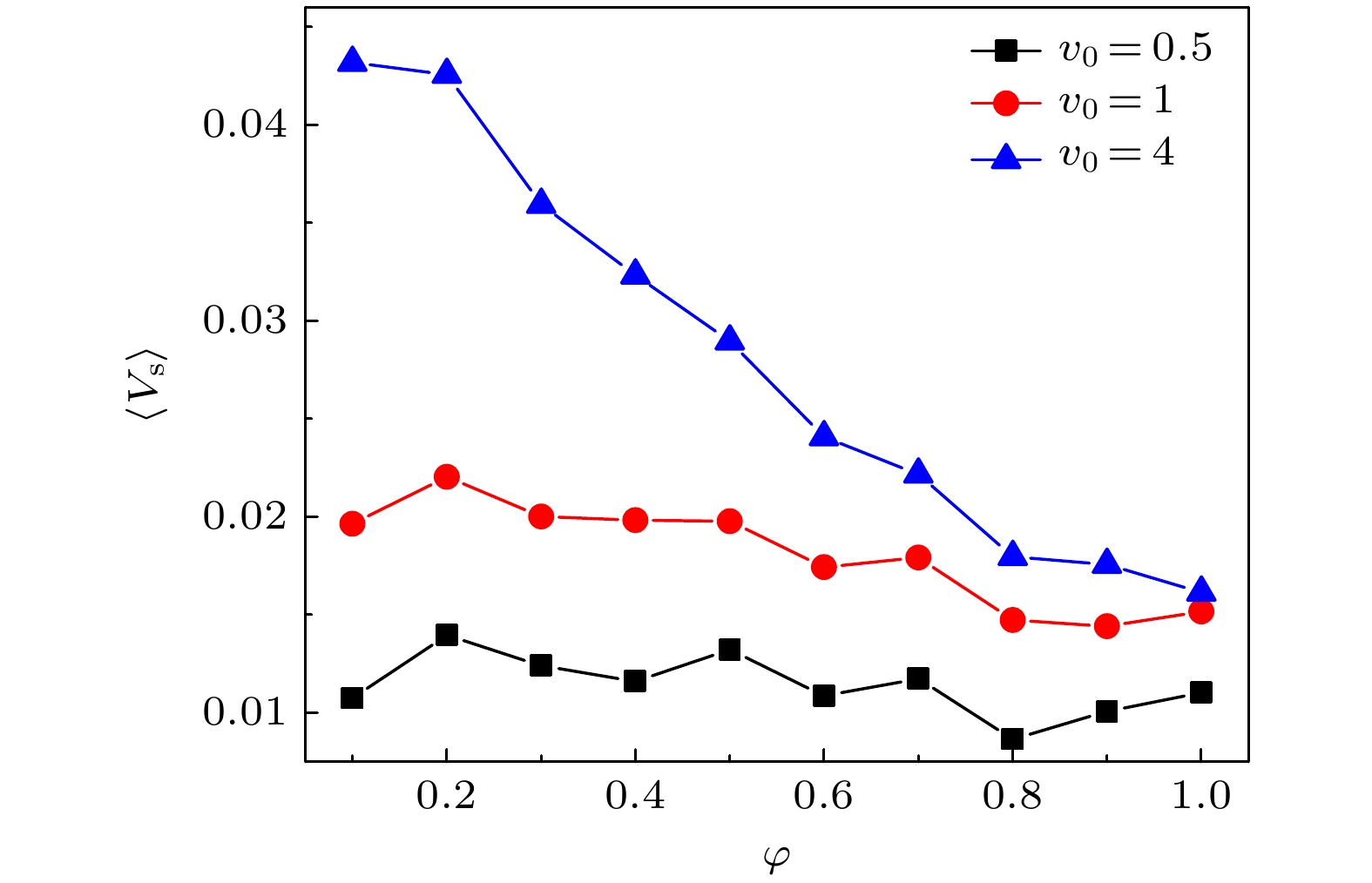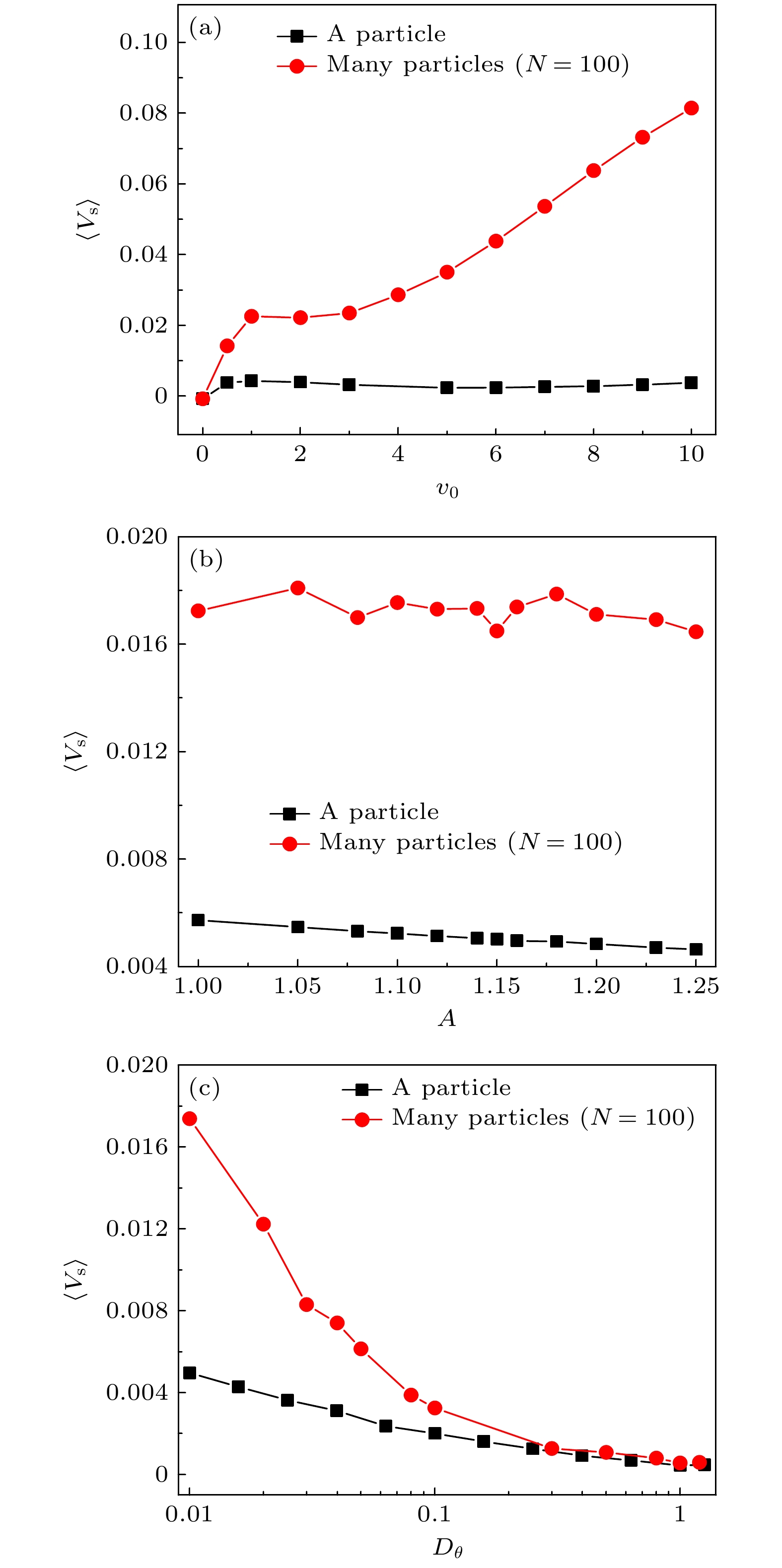-
Molecular motor can effectively convert chemical energy into mechanical energy in living organisms, and its research is currently at the forefront of study in biology and physics. The dynamic process of its guided movement, along with the crucial role they play in intra-cellular material transport, has significantly aroused the interest of many researchers. Theoretical and experimental researches have allowed detailed examinations of the motion attributes of these molecular motors. The Brownian ratchet model important. It provides an illustration of a non-equilibrium system that transforms thermal fluctuation into guided transport by utilizing temporal or spatial asymmetry. The mechanism has been extensively explored and studied across fields including physics, biology and nanotechnology. Investigations into a variety of ratchets and identification of optimum conditions contribute to a deeper understanding of guided Brownian particle transport. Preceding studies on ratchet systems largely concentrated on the rectification motions of diverse types of particles-active, polar and chiral-in asymmetric structures. However, the transport of deformable particles in asymmetric channel has not been examined relatively. Particles in soft material systems such as cell monolayer, tissue, foam, and emulsion are frequently deformable. The shape deformation of these soft particles significantly affects the system’s dynamic behavior. Thus, understanding the guided transport of these deformable particles within a confined structure is crucial. In order to explain this problem more clearly, we numerically simulate the guided transportation of active, deformable particles within a two-dimensional, periodic, asymmetric channel. We identify the factors that influence the transport of these particles within a confined structure. The main feature of the deformable particle model is that the particle’s shape is characterized by multiple degree of freedom. For active deformable particles, self-propulsion speed disrupts thermodynamic equilibrium, leading to guided transport in spatially asymmetric condition. Our findings demonstrate that a particle’s direction of movement is entirely determined by the channel's asymmetric parameter, and it tends to be attracted towards increased stability. Augmenting particle self-propulsion speed and particle softness can facilitate ratchet transport. When the self-propulsion speed v0 is large, the particle’s tensile effect becomes more apparent, and particle softening significantly enhances directed transport. In contrast, an increase in density and rotational diffusion can slow particle rectification. Increased density can obstruct particles, making channel passage more difficult. Elevated rotational diffusion reduces persistence length, challenging particle transition through channels. With constant density, a greater number of particles will also encourage rectification. These research findings offer a valuable insight into the transportation behaviors of deformable particles in a confined structure. They also deliver crucial theoretical support for applicable experiments in the field of soft matter. [1] Xie P 2010 Int. J. Biol. Sci. 6 665
 Google Scholar
Google Scholar
[2] Browne W, Feringa B 2006 Nat. Nanotechnol. 1 25
 Google Scholar
Google Scholar
[3] Jülicher F, Ajdari A, Prost J 1997 Rev. Mod. Phys. 69 1269
 Google Scholar
Google Scholar
[4] 刘艳艳, 孙佳明, 范黎明, 高天附, 郑志刚 2023 72 040501
 Google Scholar
Google Scholar
Liu Y Y, Sun J M, Fan L M, Gao T F, Zheng Z G 2023 Acta Phys. Sin. 72 040501
 Google Scholar
Google Scholar
[5] Rice S, Lin A W, Safer D, Hart C L, Naber N, Carragher B O, Cain S M, Pechatnikova E, Wilson-Kubalek E M, Whittaker M, Pate E, Cooke R, Taylor E W, Milligan R A, Vale R D 1999 Nature 402 778
 Google Scholar
Google Scholar
[6] Reimann P 2002 Phys. Rep. 361 57
 Google Scholar
Google Scholar
[7] Ros A, Eichhorn R, Duong T, Regtmeier J, Reimann P, Anselmetti D 2005 Nature 436 928
 Google Scholar
Google Scholar
[8] Gao T F, Chen J C 2009 J. Phys. A Math. Theor. 42 065002
 Google Scholar
Google Scholar
[9] Ai B Q, He Y F, Zhong W R 2011 Phys. Rev. E 83 051106
 Google Scholar
Google Scholar
[10] Gao T F, Liu F S, Chen J C 2012 Chin. Phys. B 21 020502
 Google Scholar
Google Scholar
[11] Zhang H W, Wen S T, Zhang H T, Li Y X, Chen G R 2012 Chin. Phys. B 21 078701
 Google Scholar
Google Scholar
[12] Parrondo J M R, De Cisneros B J 2002 Appl. Phys. A 75 179
 Google Scholar
Google Scholar
[13] Luo Y H, Zeng C H, Ai B Q 2020 Phys. Rev. E 102 042114
 Google Scholar
Google Scholar
[14] He Y F, Ai B Q, Dai C X, Song C, Wang R Q, Sun W T, Liu F C, Feng Y 2020 Phys. Rev. Lett. 124 075001
 Google Scholar
Google Scholar
[15] Li Y Y, Ghosh P K, Marchesoni F, Li B W 2014 Phys. Rev. E 90 062301
[16] Mateos L J 2000 Phys. Rev. Lett. 84 258
 Google Scholar
Google Scholar
[17] Ai B Q 2017 Phys. Rev. E 96 012131
 Google Scholar
Google Scholar
[18] Lau B, Kedem O, Ratner M A, Weiss E A 2016 Phys. Rev. E 93 062128
 Google Scholar
Google Scholar
[19] Sandor C, Libal A, Reichhardt C, Olson Reichhardt C J 2017 Phys. Rev. E 95 032606
 Google Scholar
Google Scholar
[20] Astumian R N, Bier M 1994 Phys. Rev. Lett. 72 1766
 Google Scholar
Google Scholar
[21] Liao J J, Zhu W J, Ai B Q 2018 Phys. Rev. E 97 062151
 Google Scholar
Google Scholar
[22] Mei D, Xie C W, Zhang L 2003 Phys. Rev. E 68 051102
 Google Scholar
Google Scholar
[23] de Souza Silva C C, Van de Vondel J, Morelle M, Moshchalkov V V 2006 Nature 440 651
 Google Scholar
Google Scholar
[24] Derenyi I, Vicsek T 1995 Phys. Rev. Lett. 75 374
 Google Scholar
Google Scholar
[25] Zhang H W, Wen S T, Chen G R, Li Y X, Cao Z X, Li W 2012 Chin. Phys. B 21 038701
 Google Scholar
Google Scholar
[26] 吕明涛, 延明月, 艾保全, 高天附, 郑志刚 2017 66 220501
 Google Scholar
Google Scholar
Lv M T, Yan M Y, Ai B Q, Gao T F, Zheng Z G 2017 Acta Phys. Sin. 66 220501
 Google Scholar
Google Scholar
[27] Wan M B, Reichhardt C J O, Nussinov Z, Reichhardt C 2008 Phys. Rev. Lett. 101 18102
 Google Scholar
Google Scholar
[28] Kummel K, ten Hagen B, Wittkowski R, Buttinoni I, Eichhorn R, Volpe G, Löwen H, Bechinger C 2013 Phys. Rev. Lett. 110 198302
 Google Scholar
Google Scholar
[29] Ai B Q, He Y F, Zhong W R 2017 Phys. Rev. E 95 012116
 Google Scholar
Google Scholar
[30] Zhu W J, Li F G, Ai B Q 2017 Eur. Phys. J. E 40 59
 Google Scholar
Google Scholar
[31] Nourhani A, Crespi V H, Lammert P E 2015 Phys. Rev. Lett. 115 118101
 Google Scholar
Google Scholar
[32] Cardenas-Barrantes M, Cantor D, Barés J, Renouf M, Azéma E 2021 Phys. Rev. E 103 062902
 Google Scholar
Google Scholar
[33] Wang D, Treado J D, Boromand A, Norwick B, Murrell M P, Shattuck M D, O’Hern C S 2021 Soft Matter 17 9901
 Google Scholar
Google Scholar
[34] Boromand A, Signoriello A, Ye F, O’Hern C S, Shattuck M D 2018 Phys. Rev. Lett. 121 248003
 Google Scholar
Google Scholar
[35] Ai B Q, Ma J, Zeng C H, He Y F 2023 Phys. Rev. E 107 024406
 Google Scholar
Google Scholar
[36] Ai B Q, Guo R X 2021 Phys. Rev. E 104 064411
 Google Scholar
Google Scholar
[37] Li J J, Lin F J, Ai B Q 2022 New J. Phys. 24 073027
 Google Scholar
Google Scholar
[38] Reichhardt C J O, Reichhardt C 2010 Phys. Rev. B 81 224516
 Google Scholar
Google Scholar
[39] Bellizotti Souza J C, Vizarim N P, Reichhardt C J O, Reichhardt C, Venegas P A 2021 Phys. Rev. B 104 054434
 Google Scholar
Google Scholar
-
图 1 (a)可形变粒子在二维不对称周期通道中运动的示意图, 通道的形状利用其半宽度来描述( (1) 式),
$ x $ 方向施加周期边界条件,$ y $ 方向施加反射边界条件; (b)由20个顶点构成的多边形粒子,$ \{{x}_{m, {\rm{c}}}, {y}_{m, {\rm{c}}}\} $ 表示多边形m的质心,$\{{x}_{m, i}, {y}_{m, i}\} $ 表示多边形$ m $ 的第$ i $ 顶点的位置Figure 1. (a) Scheme of deformable particles moving in a two-dimensional asymmetric periodic channel, the shape of the channel is described by the half width of the channel (Eq. (1)), periodic boundary condition is imposed in the
$ x $ -direction and reflection boundary condition in the$ y $ -direction; (b) the deformable polygonal particles with 20 vertices,$ \{{x}_{m, i}, {y}_{m, i}\} $ is the position of vertex$ i $ in the polygon$ m $ and$ \{{x}_{m, {\rm{c}}}, {y}_{m, {\rm{c}}}\} $ is the center of mass of the polygon$ m $ .图 4 平均速度
$ \left\langle{{V}_{{\rm{s}}}}\right\rangle $ 随旋转扩散系数$ {D}_{\theta }{\rm{在}}{\rm{不}}{\rm{同}}{v}_{0}{\rm{下}} $ 的变化曲线,$ A=1.16,\; \varphi =0.625 $ Figure 4. Average velocity
$ \left\langle{{V}_{{\rm{s}}}}\right\rangle $ versus the rotational diffusion coefficient$ {D}_{\theta } $ for different$ {v}_{0} $ at$ A=1.16$ and$ \varphi =0.625 $ .图 5 (a) 平均速度
$ \left\langle{{V}_{{\rm{s}}}}\right\rangle $ 随形状参数A在不同$ {v}_{0} $ 下的变化曲线; (b) 平均速度$ \left\langle{{V}_{{\rm{s}}}}\right\rangle $ 在$ {v}_{0}\text{-}A $ 平面的相图,$ \varphi =0.625 $ Figure 5. (a) Average velocity
$ \left\langle{{V}_{{\rm{s}}}}\right\rangle $ versus the shape parameter$ A $ for different$ {v}_{0} $ at$ \phi =0.625 $ ; (b) phase diagram of the average velocity$ \left\langle{{V}_{{\rm{s}}}}\right\rangle $ in the$ {v}_{0}\text{-}A $ representation at$ \varphi =0.625 $ .图 7
$ \varphi =0.625 $ 时, 单粒子和多粒子的平均速度$ \left\langle{{V}_{{\rm{s}}}}\right\rangle $ 分别随$ A, \;{v}_{0}, \;{D}_{\theta } $ 的变化曲线Figure 7. The average velocity of single particle and many particles
$ \left\langle{{V}_{{\rm{s}}}}\right\rangle $ is taken as a function of$ A,\;{v}_{0}, $ and$ {D}_{\theta }$ at$\varphi =0.625 $ . -
[1] Xie P 2010 Int. J. Biol. Sci. 6 665
 Google Scholar
Google Scholar
[2] Browne W, Feringa B 2006 Nat. Nanotechnol. 1 25
 Google Scholar
Google Scholar
[3] Jülicher F, Ajdari A, Prost J 1997 Rev. Mod. Phys. 69 1269
 Google Scholar
Google Scholar
[4] 刘艳艳, 孙佳明, 范黎明, 高天附, 郑志刚 2023 72 040501
 Google Scholar
Google Scholar
Liu Y Y, Sun J M, Fan L M, Gao T F, Zheng Z G 2023 Acta Phys. Sin. 72 040501
 Google Scholar
Google Scholar
[5] Rice S, Lin A W, Safer D, Hart C L, Naber N, Carragher B O, Cain S M, Pechatnikova E, Wilson-Kubalek E M, Whittaker M, Pate E, Cooke R, Taylor E W, Milligan R A, Vale R D 1999 Nature 402 778
 Google Scholar
Google Scholar
[6] Reimann P 2002 Phys. Rep. 361 57
 Google Scholar
Google Scholar
[7] Ros A, Eichhorn R, Duong T, Regtmeier J, Reimann P, Anselmetti D 2005 Nature 436 928
 Google Scholar
Google Scholar
[8] Gao T F, Chen J C 2009 J. Phys. A Math. Theor. 42 065002
 Google Scholar
Google Scholar
[9] Ai B Q, He Y F, Zhong W R 2011 Phys. Rev. E 83 051106
 Google Scholar
Google Scholar
[10] Gao T F, Liu F S, Chen J C 2012 Chin. Phys. B 21 020502
 Google Scholar
Google Scholar
[11] Zhang H W, Wen S T, Zhang H T, Li Y X, Chen G R 2012 Chin. Phys. B 21 078701
 Google Scholar
Google Scholar
[12] Parrondo J M R, De Cisneros B J 2002 Appl. Phys. A 75 179
 Google Scholar
Google Scholar
[13] Luo Y H, Zeng C H, Ai B Q 2020 Phys. Rev. E 102 042114
 Google Scholar
Google Scholar
[14] He Y F, Ai B Q, Dai C X, Song C, Wang R Q, Sun W T, Liu F C, Feng Y 2020 Phys. Rev. Lett. 124 075001
 Google Scholar
Google Scholar
[15] Li Y Y, Ghosh P K, Marchesoni F, Li B W 2014 Phys. Rev. E 90 062301
[16] Mateos L J 2000 Phys. Rev. Lett. 84 258
 Google Scholar
Google Scholar
[17] Ai B Q 2017 Phys. Rev. E 96 012131
 Google Scholar
Google Scholar
[18] Lau B, Kedem O, Ratner M A, Weiss E A 2016 Phys. Rev. E 93 062128
 Google Scholar
Google Scholar
[19] Sandor C, Libal A, Reichhardt C, Olson Reichhardt C J 2017 Phys. Rev. E 95 032606
 Google Scholar
Google Scholar
[20] Astumian R N, Bier M 1994 Phys. Rev. Lett. 72 1766
 Google Scholar
Google Scholar
[21] Liao J J, Zhu W J, Ai B Q 2018 Phys. Rev. E 97 062151
 Google Scholar
Google Scholar
[22] Mei D, Xie C W, Zhang L 2003 Phys. Rev. E 68 051102
 Google Scholar
Google Scholar
[23] de Souza Silva C C, Van de Vondel J, Morelle M, Moshchalkov V V 2006 Nature 440 651
 Google Scholar
Google Scholar
[24] Derenyi I, Vicsek T 1995 Phys. Rev. Lett. 75 374
 Google Scholar
Google Scholar
[25] Zhang H W, Wen S T, Chen G R, Li Y X, Cao Z X, Li W 2012 Chin. Phys. B 21 038701
 Google Scholar
Google Scholar
[26] 吕明涛, 延明月, 艾保全, 高天附, 郑志刚 2017 66 220501
 Google Scholar
Google Scholar
Lv M T, Yan M Y, Ai B Q, Gao T F, Zheng Z G 2017 Acta Phys. Sin. 66 220501
 Google Scholar
Google Scholar
[27] Wan M B, Reichhardt C J O, Nussinov Z, Reichhardt C 2008 Phys. Rev. Lett. 101 18102
 Google Scholar
Google Scholar
[28] Kummel K, ten Hagen B, Wittkowski R, Buttinoni I, Eichhorn R, Volpe G, Löwen H, Bechinger C 2013 Phys. Rev. Lett. 110 198302
 Google Scholar
Google Scholar
[29] Ai B Q, He Y F, Zhong W R 2017 Phys. Rev. E 95 012116
 Google Scholar
Google Scholar
[30] Zhu W J, Li F G, Ai B Q 2017 Eur. Phys. J. E 40 59
 Google Scholar
Google Scholar
[31] Nourhani A, Crespi V H, Lammert P E 2015 Phys. Rev. Lett. 115 118101
 Google Scholar
Google Scholar
[32] Cardenas-Barrantes M, Cantor D, Barés J, Renouf M, Azéma E 2021 Phys. Rev. E 103 062902
 Google Scholar
Google Scholar
[33] Wang D, Treado J D, Boromand A, Norwick B, Murrell M P, Shattuck M D, O’Hern C S 2021 Soft Matter 17 9901
 Google Scholar
Google Scholar
[34] Boromand A, Signoriello A, Ye F, O’Hern C S, Shattuck M D 2018 Phys. Rev. Lett. 121 248003
 Google Scholar
Google Scholar
[35] Ai B Q, Ma J, Zeng C H, He Y F 2023 Phys. Rev. E 107 024406
 Google Scholar
Google Scholar
[36] Ai B Q, Guo R X 2021 Phys. Rev. E 104 064411
 Google Scholar
Google Scholar
[37] Li J J, Lin F J, Ai B Q 2022 New J. Phys. 24 073027
 Google Scholar
Google Scholar
[38] Reichhardt C J O, Reichhardt C 2010 Phys. Rev. B 81 224516
 Google Scholar
Google Scholar
[39] Bellizotti Souza J C, Vizarim N P, Reichhardt C J O, Reichhardt C, Venegas P A 2021 Phys. Rev. B 104 054434
 Google Scholar
Google Scholar
Catalog
Metrics
- Abstract views: 4360
- PDF Downloads: 94
- Cited By: 0




























 DownLoad:
DownLoad:
